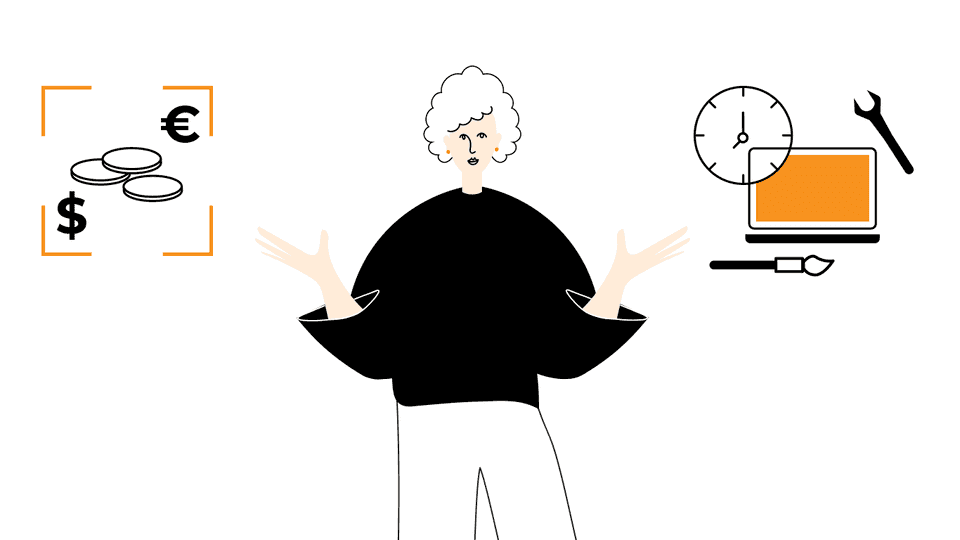Pros and Cons of Software Development Pricing Models
Fixed price or Time and Material? What is the best pricing model for software development services? Or maybe there is a third option to consider? Let’s dive into the pros and cons of popular pricing models for software development.
The most common ways to settle up with software development agencies are: fixed pricing and Time and Material (T&M) pricing models.

What is a fixed price model?
A fixed price model is a situation when you (as a client) agree with a software development agency a price set for a job to be done in a specific period of time. For example, you pay a fixed price for Minimum Viable Product (MVP).
What is a Time and Material (T&M) model price?
You pay only for the real time spent on the project and the resources (materials) needed to complete the job.
Read a free guide about MVP development

Fixed price pros:
- It gives you (a client) a sense of security.
- You know how much the development process will cost.
- You don’t have to worry about any surprises on the road therefore budget changes (in theory).
- It is convenient at the beginning of the cooperation when you want to test the software development company and still are building trust toward a software vendor.
Fixed price cons:
- It is not a flexible option. It is somehow in opposition to agile methods.
- Changing plans during the development process is a very common practice and the fixed price model doesn’t work well in these cases.
- If you need to change the tasks or need to create features that weren’t estimated earlier as soon as possible then it may cause some pauses in the development process because you and the software development agency have to go back to the valuation stage.
- You receive only the final price of all tasks. They don’t know the separate costs of every task. As a result you are unaware of a very important aspect of software development – which features cost you the most. If some of the features are particularly expensive – you could skip them if they are not crucial for the app to succeed.
Time and Material pros:
- It is a model price compatible with the agile methodology.
- It is flexible – you can quickly change the development process while the work is on, adding new tasks usually doesn't interfere with other tasks.
- You understand much better what time, effort and money is behind every feature. You know the price of every feature and based on that knowledge you can optimize the development process according to your budget and business plan.
- It also works perfectly during the maintenance phase when the software development team should be available if something happens with the product. That service can be easily estimated thanks to the T&M pricing model.
Time and Material cons:
- You never know the final price of the development process. You get the price after some features are done (depending on the number of hours and resources used on the tasks).
- You have to trust the software development agency that the time they spend on the project is accurate and reasonable.
- Sometimes you have to involve an expert that will verify the number of working hours established by the software development studio.
Due to the fact that none of these price models are perfect, at Bright Inventions we often offer a hybrid pricing model that combines the advantages of both fixed price and T&M models.
Hybrid pricing model for software development:
- Software development studio presents the fixed price but for a smaller piece of the software development cake. 🙂
- The fixed price contains the job planned to do within the sprint (usually sprint lasts 2 weeks).
- Before each sprint there is a planning meeting with the client and software development company. Both sides establish what needs to be done during the upcoming sprint.
- According to that software development company creates a budget proposal. When the client accepts it, they know what is going to be delivered within the next 2 weeks and how much it will cost.
- When the plan has to be changed because, for example, other features have to be developed asap, we have flexibility to quickly adjust to the expected changes. It is all thanks to the agile iterations – we plan only next weeks of the development process so it is much easier to change the plan.
- During the maintenance phase the client can pay for some amount of hours when a software development team is available if something has to be fixed or changed. Even if nothing happens during those hours the client is secured in case some problems occur. It is less expensive than waiting for availability of a software development company after you deal with issues in production that affect your users.
What is the best pricing model for you? Let us know in the comments!

